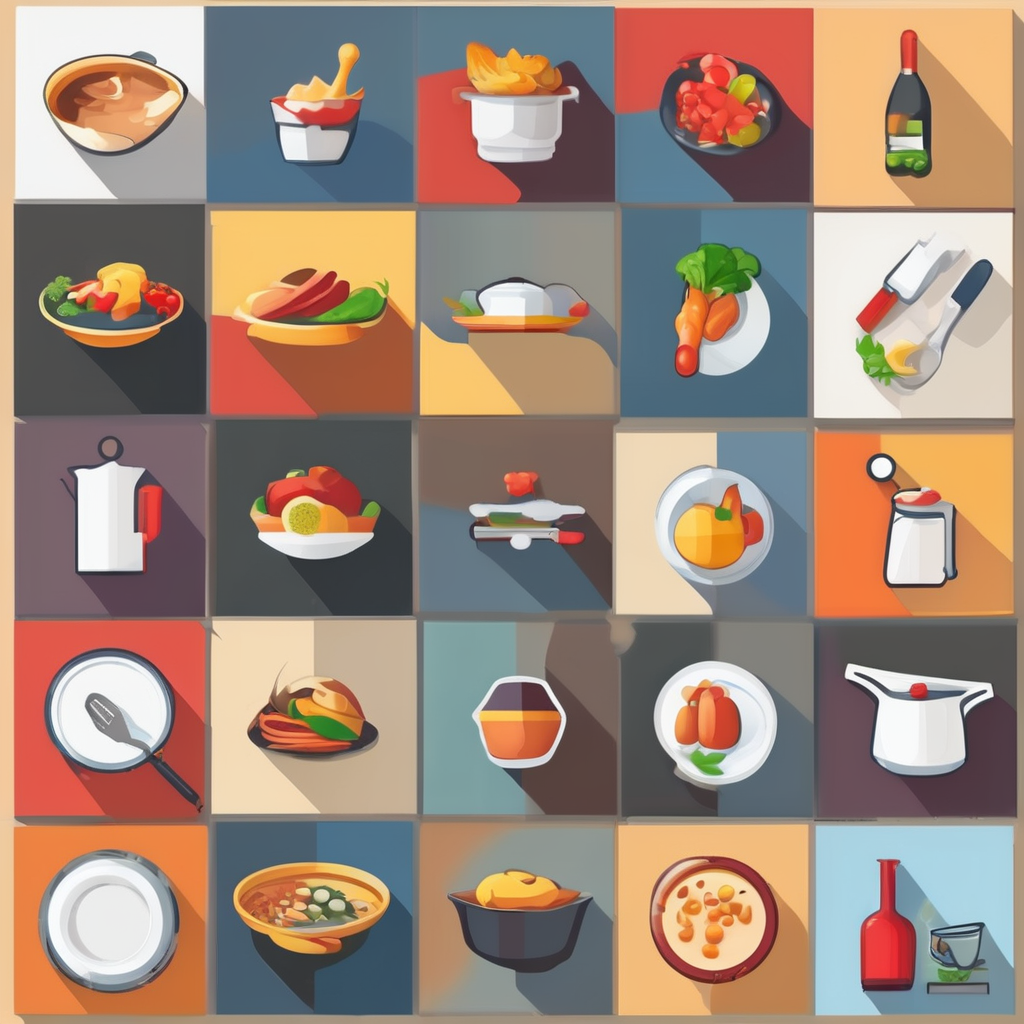Selecting Cutting Board Materials
When exploring cutting board materials, a diverse range, including wood, plastic, bamboo, and glass, presents itself, each offering distinct benefits and drawbacks. Choosing the right material is crucial for knife sharpness and product longevity. Let’s delve into the nuances of each.
Wooden boards, loved for their durability, provide a forgiving surface, aiding in maintaining knife sharpness. However, they require regular oiling to prevent warping and are generally more expensive. On the flip side, plastic boards are affordable and easy to clean, but they can dull knives faster due to their hard surface.
This might interest you : Achieve Perfection: Expert Tips for Accurate Kitchen Scale Calibration and Precise Ingredient Measuring!
Bamboo is a sustainable choice that resembles wood in its gentle impact on knives, although it may chip over time and is less robust under heavy usage. Glass boards, albeit hygienic and easy to sanitize, are notoriously harsh on knives, often dulling them quickly.
Expert recommendations suggest selecting a cutting board material based on personal cooking habits and maintenance willingness. For heavier use with minimal maintenance effort, a polished plastic board might suffice. For those valuing knife care and aesthetics, a well-maintained wooden board proves ideal. Remember, board durability links directly to regular care and consistent hygiene practices.
Topic to read : The Ultimate Guide to Selecting an Ideal Fish Poacher for Nutritious Cooking: A Must-Read for Health-Savvy Chefs
Optimal Citrus Juicing Techniques
Juicing citrus can be a delightful experience, especially with the right tools. When considering citrus juicers, you have the option of manual or electric varieties, each catering to different needs. Manual juicers are perfect for small quantities and offer hands-on control over juice extraction. They are typically affordable and easy to clean, making them ideal for occasional use.
Electric juicers, on the other hand, are designed for efficiency and speed. They are particularly beneficial for larger batches, offering consistent juice yield with less physical effort. Look for features such as automatic pulp ejection and multiple cone sizes, which enhance juice extraction and flavour. This ensures a smooth, pulpy beverage tailored to your taste.
Proper user experience goes hand in hand with longevity. Regular maintenance is crucial. Always rinse the juicer parts immediately after use to prevent pulp and juice residues from hardening. If components are dishwasher safe, utilise that feature for deeper cleaning. For manual juicers, ensure screws and hinges are periodically lubricated to keep them functional. Prioritising these care tips will not only enhance your user experience but also extend the lifespan of your citrus juicers.
Choosing the Right Espresso Machine
In the world of espresso machines, understanding the variety can elevate your home brewing experience from ordinary to exceptional. Let’s navigate through the essential types suitable for cozy home brewing: semi-automatic, super-automatic, and manual machines. Each offers distinct quality coffee experiences tailored to diverse user preferences.
Semi-automatic machines provide an ideal balance for enthusiasts. They allow control over each brewing phase, offering a hands-on approach to crafting your perfect coffee. Meanwhile, super-automatic machines are designed for convenience, automating the entire process — from grinding to brewing, just at the press of a button. They are perfect for those seeking speed without compromising on quality.
For traditionalists, manual machines offer the purest engagement with brewing, demanding precision and skill but rewarding with unmatched flavor control.
When selecting an espresso machine, consider critical features like built-in grinders, water temperatures, and customizable settings that significantly affect your brewing experience. Modern appliances also come with user-friendly designs, ensuring you enjoy the process without hassle.
Customer reviews underscore the importance of ease-of-use and cleaning, often placing high value on models combining practicality with consistent performance, helping you make informed decisions for enjoyable, quality coffee moments at home.
Maintenance and Care for Kitchen Tools
Proper kitchen tool maintenance is crucial for ensuring both product longevity and performance. Each tool, whether a cutting board or an espresso machine, demands specific care.
Cutting Boards
To preserve knife sharpness, prioritize regular cleaning and conditioning of wooden cutting boards. Oil them periodically to prevent drying and warping. Avoid excessive water exposure and never run wooden boards through the dishwasher. For plastic cutting boards, utilize the dishwasher as needed for a thorough clean, but check manufacturer guidelines.
Citrus Juicers
Ensure your citrus juicers are free from pulp residues to maintain optimal performance. Manual juicers should be disassembled and cleaned after each use. For electric variants, focus on rinseable parts and inspect for removable filters. Routine checks and cleanings prevent pulp build-up, ensuring seamless juice extraction.
Espresso Machines
Maintaining espresso machines enhances the quality of coffee brewed. Regular descaling keeps water flow unobstructed, crucial for both semi-automatic and super-automatic machines. Clean the steam wand and group head after each use to prevent clogs and maintain pressure efficiency. Simple daily upkeep prolongs the life of your espresso machine while preserving its brewing prowess.
